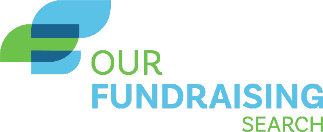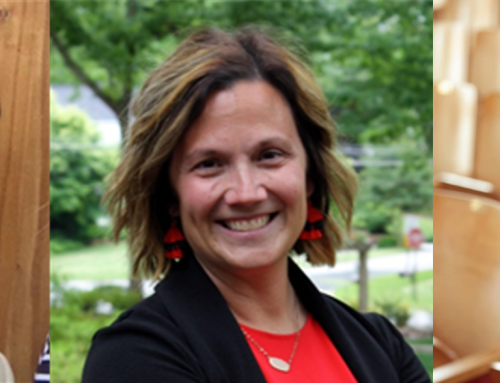The success of a capital campaign lies in the details as much as in the dollars. These include the important elements of pre-campaign planning, sequential fundraising, the role of leadership and the importance of stewardship.
The Timeline
While a typical capital campaign lasts 12- 18 months, campaign activities occur over a three-to-five-year cycle. The first one-to-three years of the cycle includes creating or redefining the strategic and business plans as well as assessing staffing needs. It should also have a focus on the annual development plan with intentional education and cultivation activities strategically geared towards the future capital campaign.
During the pre-campaign planning phase, typically lasting 3-12 months, detailed campaign planning occurs including cost projections with architect and/or engineering plans, internal and external readiness assessments, otherwise known as the feasibility study, and the creation of the campaign plan and case for support. Following the feasibility study, another 2-3 months of campaign planning is common prior to the official launch of the campaign to finalize any updates realized through the study.
Once the active campaign is launched, fundraising occurs sequentially with the board solicitation first followed by solicitation of your lead gift, top ten prospects, and then other major prospects. Always solicit the best prospects first, followed by the next best prospects. The public phase comes at the end when most of the money has been raised, allowing everyone to be a part of closing out the campaign.
Publicly celebrating the close of your campaign is important, followed by a year or two of collecting pledges and implementing donor stewardship.
Pre-Campaign Planning
The keys to success of any campaign are a compelling case for support, committed leadership and a written plan of action. Pre-campaign planning is where those key elements are solidified for a capital campaign. Leadership is the most important of the three keys to campaign fundraising success.
In a typical capital campaign, there are three distinct planning phases: pre-campaign planning (3-12 months), the feasibility study (3-6 months) and final campaign planning prior to launch (2-3 months).
It is common for a nonprofit board or leadership to decide a capital campaign is necessary and become so engrossed in the immediacy of the need that they rush through the planning process or assume it can be done simultaneously to raising major gifts. Do not fall victim to this way of thinking. The reality is that the more prepared you and your nonprofit are for the campaign, even if the process takes a few more months than you would like, the more successful the campaign tends to be – and often leads to a shorter overall timeline.
The pre-campaign planning phase is a time for questions, which should lead to the implementation of plans for answering those questions. What are the organization’s immediate and long-term needs? Are costs firmly established? What will be the desired outcomes of these expenditures? Does the board agree with and understand the campaign process? How will the campaign impact the annual budget and the community it serves? Are there adequate staff and resources to operate a campaign? Is your donor community willing to support a campaign? If so, at what level of support and when? What is the specific project plan? Usually there are more needs than funding permits, so priorities must be set. What is the rationale or case for support of the priorities? What is the exact cost of each item in the plan? Is there a benefit to the donors/prospects as well as to the organization? What is the projected timeline? What will be the end results of a campaign?
The end of the campaign planning phase should result in defined goals for the campaign; a written plan of action including a timeline, ranked prospect list and range of gifts table; structured leadership including a campaign committee with written job descriptions; and a case for support.
Written Plan of Action
A written campaign plan requires self-discipline. While the Director of Development takes the lead in the creation and management of the plan, the Executive Director, Board of Directors, staff, and volunteer leadership must understand and buy in to the campaign plan. The process of physically writing out the plan identifies weaknesses and challenges of the campaign components. The plan also specifies who does what, when, where, why and how. When creating the plan for the capital campaign, carefully consider how it will impact the annual fund and other fundraising activities and how they will run simultaneously.
The Case for Support and Campaign Communications
The goal of campaign communications is to induce action. In order to do this effectively, you must know your donors and their motivations for giving. Campaign writing is not like other writing. Campaign communications are highly personal and must persuade, show empathy, and then induce action.
The campaign solicitation packet will include the ask letter signed by the campaign chair and/or other leadership, the case for support relaying all major talking points related to the campaign and a pledge form. The named gift opportunities should be available in solicitation meetings but not left behind.
When writing the case for support, make it long enough to explain why the dollars are needed, but short enough to keep the reader’s attention. Engage your reader with examples and stories. Be clear about expected action. Say it plainly. Visualize and summarize. Clearly describe the campaign’s goal and purpose. Include architect’s renderings/floor plans/models and site or master plans to help donors visualize the campaign projects. Be sure to include a “frequently asked questions” section and a cost analysis that explains the goal.
Whether it’s the case for support or other marketing materials during the public phase of the campaign, tell donor stories, show how giving has helped and feature campaign leadership sharing why they chose to support the campaign. Let the organization’s character shine through. Campaign objectives must be clear, simple, and compelling.
Other campaign pieces include pledge forms, folders, stationery, envelopes, matching invitations to campaign events and newsletters. Digital versions should also be available.
Campaign Leadership
Campaigns begin with a solid base. The Executive Director and Board of Directors will provide the vision and mission for the organization and the need and vision for a campaign. It should be clearly articulated in a written strategic and business plan. There should be openness about the financial health and track record of the organization. Information will need to be confidentially shared with individuals involved in the campaign. The Executive Director, Board of Directors and senior staff must participate in the campaign at a leadership level including cultivating, soliciting, and stewarding donors.
Board members play many roles in a campaign. Each can be the visionary, leader, advocate, donor, cultivator, solicitor, and steward. A board member must play a leadership role in all phases of the campaign. The board must approve, understand, and support the campaign plan. One hundred percent financial participation of the board early in the campaign is essential. Giving at a leadership level is also expected. Board members should be major donors, provide access to other donors and be willing to visit and ask. All board members should help solicit gifts. A main function of individual board members is to bring potential donors to you.
Sequentially, solicitation of the board is the first step in the campaign. The board participation goal should always be 100 percent. Is a challenge gift possible – either in challenge to the board or from the board to other major donors to create momentum? Board members should always be solicited in person by their peer(s), no matter the size of their potential gifts.
The Campaign Director is either a staff member or hired counsel and manages the planning, coordination, and execution of the campaign. The Campaign Coordinator is the staff member who supports the Campaign Director through the execution of day-to-day internal tasks.
The entire development staff should be well trained and familiar with the constituents. This begins with an accurate database and information must be readily available for staff and volunteer solicitors. Successful annual fund planning and solicitations will have prepared you and the development team for this step. Special consideration by leadership should be made regarding capacity of the current fundraising staff and department structure to take on a capital campaign in addition to all other duties.
The campaign planning committee provides volunteer leadership during the pre-campaign planning phase. It is usually comprised of three-to-eight people, a volunteer committee chair, and key staff. This committee oversees the case development and the feasibility study process. The campaign planning committee commits to two meetings – one prior to the start of the feasibility study to approve the case for support and the list of proposed interviewees and one at the end to receive the study findings. From there, the committee recommends the acceptance of the study findings and makes a motion to the Board of Directors on when, or if, to move forward with the campaign.
The campaign committee is typically comprised of ten-to-twelve volunteers plus key staff and commits to meeting monthly throughout the entirety of the active campaign. A good rule of thumb is one solicitor for every five prospects. The campaign committee should be recruited by pulling from both the campaign planning committee and additional leadership volunteers identified during the feasibility study. The campaign committee chair should be recruited first and then personally involved in the identification and recruitment of the additional members. Plan to incorporate fundraising training into the first committee meeting to ensure all members understand their role on the committee and are equally prepared for the solicitation process. Campaign committee members should cultivate, solicit, and steward gifts. They should be part of evaluating the fundraising successes and challenges and be deeply involved in the campaign.
The development committee can support a campaign in several ways. They can serve as the campaign study committee or approve members to serve. They can serve as all or a portion of the campaign committee. They can hire and retain counsel. They can educate the other board members about their role as lead donors and solicitors.
All leadership roles in a campaign, both staff and volunteers, should have written job descriptions with clear expectations. Volunteers should be recruited in person by someone they cannot refuse.
Internal & External Assessment
An internal assessment looks at the internal preparedness of an organization and the resources needed to run a campaign. What would be needed in terms of staffing and other support to overlay a campaign on an already functioning development operation? What additional resources are needed for the campaign to function properly? Are there policies and procedures in place that address situations encountered in a campaign?
An external assessment, typically referred to as a feasibility study, is the process of assessing the likelihood of an organization’s top prospects to support a campaign and at what financial level. The goals of the feasibility study are to (1) determine the potential of your organization for raising the major gifts needed for a successful campaign; (2) identify the top ten gifts; (3) identify campaign leadership; and (4) determine the approximate amount that can be raised.
Prior to committing to a campaign, a third party typically conducts the feasibility study. The study is based on objective, personal interviews with top potential prospects. A feasibility study usually takes three to six months, but timing depends on the development of the case for support and the availability of interviewees. The cost of a study depends on the number of interviews conducted and the geographical location of interviewees.
Why Hire Counsel?
Why hire outside counsel for a feasibility study when you’ve spent countless hours building relationships with these same individuals? Wouldn’t your relationship with them make you the obvious choice to ask their opinion?
Outside counselors can be good listeners and strategists. They can often elicit information that interviewees are hesitant to share with staff or a board member. They may not want to hurt your feelings or appear to be non-supportive and may therefore (and in our experience…often) hold back information that would help craft the most successful campaign plan.
The results of the feasibility study help fine-tune the campaign plan, case for support and goal(s) of the campaign. Analysis and recommendations are provided in a final report and plan of action.
Pre-Launch Planning
The feasibility study often identifies items that need to be addressed prior to launching the campaign. This might be as small as tweaks to the case for support for added clarity or as big as addressing donor concerns. The length of the final campaign planning phase will depend entirely on the work put in up to this point, as well as the findings identified during the feasibility study and the length of time needed to address them.
This is the time to ensure that all systems and processes for accepting pledges and processing gifts, and the acknowledgement of those pledges/gifts, are in place.
Define gift-naming opportunities. These can include buildings, rooms, a donor wall, time-limited named spaces, named endowment funds or expendable named program funds. Have a list of all available naming opportunities to share in solicitation meetings. These should include all potential spaces/programs to be named, not only those associated with the current campaign.
Campaign Launch
You’ve made it! You put in the time to properly prepare a solid plan and timeline; the feasibility study is complete and recommends that you move forward; you’ve recruited and trained the campaign committee. You have now reached the active phase of the campaign.
The active phase includes two phases: the silent/quiet phase during which you solicit all major gifts and the public phase when you launch the full-scale marketing campaign to invite everyone to participate. The majority of the funds raised in the campaign will be raised during the silent phase, so resist the urge to publicly market the campaign too early.
A proven method of successful campaign soliciting is called sequential fundraising. Sequential fundraising simply means ranking prospects by ability and likelihood of a gift and making asks in that order.
The Range-of-Gifts Table
A range-of-gifts table provides you with the level of gifts and number of prospects needed in order to meet the campaign goal. A range-of-gifts table educates the campaign leadership about expected gift size. It informs prospective donors. It focuses all campaign workers on soliciting in sequential order – the top ten gifts first.
In developing a range-of-gifts table, the lead gift needed is usually about 20 percent of the total goal. The top ten to thirty gifts usually make up about one half of the campaign total. All gifts solicited during the silent phase of the campaign are major gift prospects and should be asked personally. A version of the range-of-gifts table can be created that translates the suggested number of gifts into prospect names to be assigned to solicitors. Usually, the larger the campaign, the longer the top-gift phase and the higher the dollar value of the amount to be raised.
Once all major gift prospects have been solicited AND the campaign has secured between 60-80% of the goal, leadership can make the decision to launch the public phase of the campaign. The public phase is the point of the campaign in which wide-spread visibility is brought to the campaign. Public gifts typically equate to less than 10 percent of the campaign goal.
Campaign Committee
The campaign committee should personally solicit gifts and provide insight for solicitation strategies, motivate other volunteers and campaign leadership. Staff should handle the rest of the details. The campaign will continue to move forward if the campaign committee practices intentional contacts, cultivation, solicitation and closing. When one action closes, another opens. The committee should meet regularly and use email and voicemail as tools in between.
The development office staff should prepare written talking points, solicitation materials, proposals, draft all correspondence, coordinate meetings and handle solicitation tracking for the committee. An action item report should include the prospect name, the projected ask amount, the assigned solicitor, and staff back up, the last action date and the next step and date.
The Annual Fund During a Capital Campaign
Before launching a capital campaign, decide how to integrate or separate annual fund/operating campaigns and capital campaign priorities. Joint asks for major donors and prospects are often used. It is possible to grow the annual fund during a capital campaign by using multi-year annual fund pledges, challenge grants and marketing membership in annual giving societies. Social media is most useful to a campaign during the public phase.
Celebration
It is important to officially end the campaign. Hold a victory celebration for volunteers and donors. Write donors to let them know that the campaign goal has been reached. Seek ways to keep volunteers/donors involved in new activities. Provide any and all donor recognition and signage that was promised. Be creative and sincere.
Stewardship
Stewardship is the act of showing appreciation for the contributions of donors and volunteers. It is both immediate and ongoing. And hopefully, you have been in touch with your donors throughout the pandemic.
Immediate stewardship includes a written acknowledgement of the gift or pledge within 24 hours. It also includes personal notes and/or phone calls from campaign leadership to say thank you. Stewardship also includes keeping the donor informed of updates and milestones reached throughout the campaign. You must do what you promised you would do when you presented them with your case for support. Collect the pledges and communicate campaign results. Pledge reminders should be sent at appropriate times throughout the campaign. Window envelopes or something that looks like an invoice should be avoided. Form letters should not replace relationships and relationship building. Personalized pledge reminders, with telephone calls, are another cultivation opportunity. Each pledge payment should be treated as a new gift.
On-going stewardship will occur for three to five years following the campaign. Stewardship is not only important to the current campaign but to future campaigns as well. An individual stewardship plan should be created for each major campaign donor, outlining how you will continue to cultivate an intentional relationship and engage them in the organization for years to come.
The Cycle Starts Again
Closing the campaign well sets you up for a successful next campaign. Preparation for the next campaign should begin immediately. The campaign plan should be evaluated and updated. Final financial and donor reports should be prepared. Provide cash flow reports that detail pledge payments. Review all open pledges and any necessary write offs. Analyze refusals and any prospects that did not yet make commitments. Follow up on any outstanding gift opportunities. Make recommendations for improvements in the next campaign while campaign activities are fresh in mind.
To Recap
The process for a campaign takes from a few months to five years with good planning and includes cultivation and stewardship. The planning phase is crucial to the process and should not be skipped or rushed. The majority of the active campaign will be spent in the silent phase with leadership personally soliciting prospects in sequential order. Celebrate the campaign’s success, evaluate then start the process again.
So, is your nonprofit ready for the next phase of your development? Now is the time to begin in earnest and you, too, can be ready for a campaign by Labor Day. Let us at Our Fundraising Search know how we might assist you. Good luck!






Leave A Comment